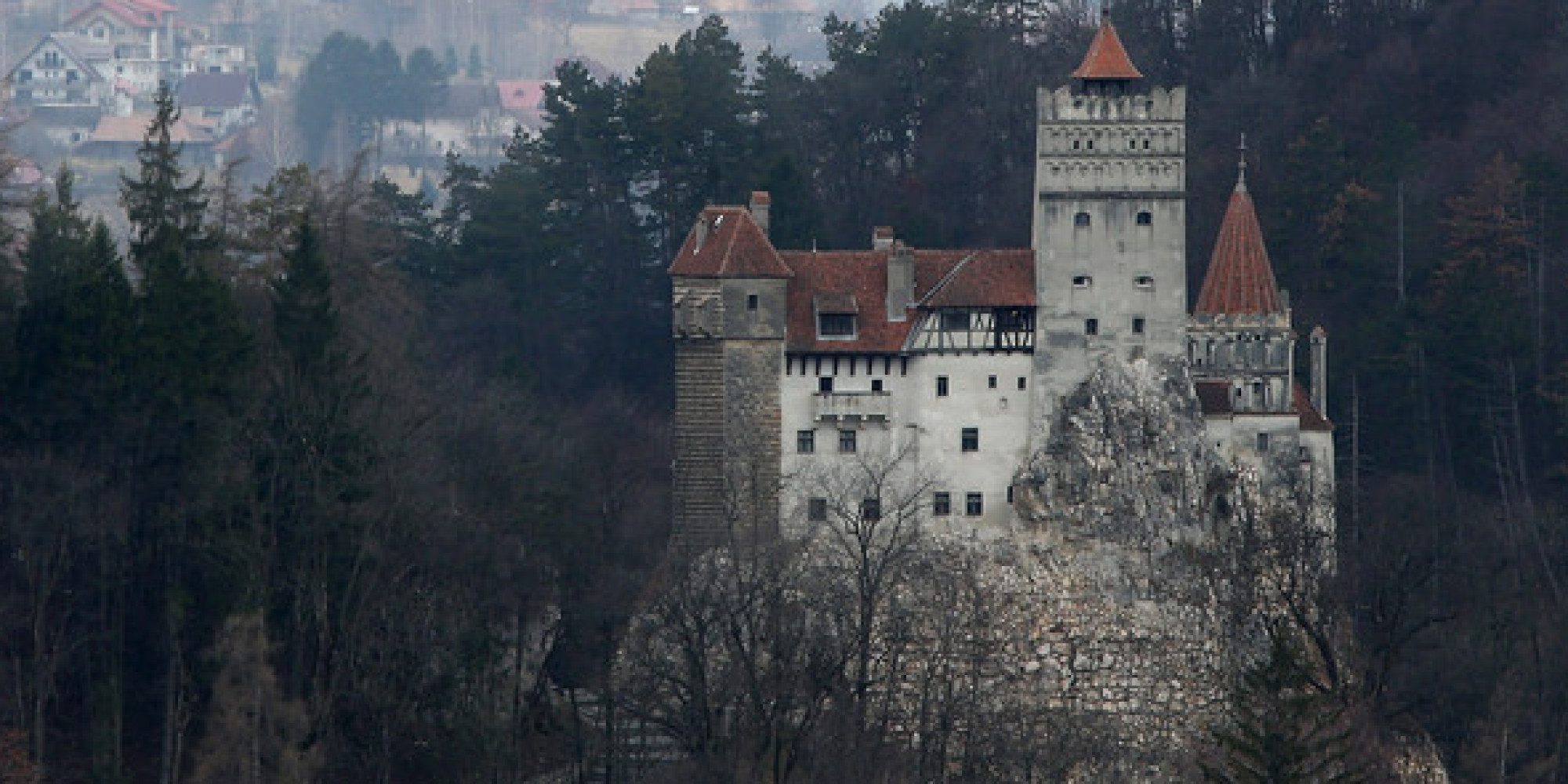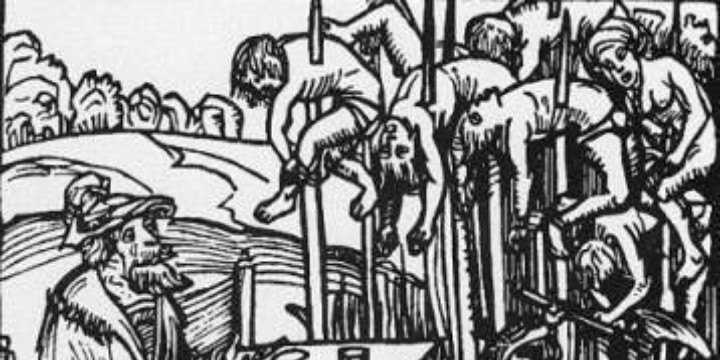





Ping to Vlad the Inhaler.
Already-reconstructed rooms in the castle's depths include a torture chamber...
They know how to pack the tourists in. Nobody's going there to see a sewing room. There is some historical debate as to at what point a redoubt turns into a fortress, a fortress into a castle; I gently suggest that it has to have a torture chamber to be a proper castle.
bkmrk
If they were to make a documentary on a modern-day vampire causing the deaths and despair of millions of people on Earth, they should visit the Soros compound.
My Sister and Brother-in-Law visited that Castle plus another one associated with Dracula and also his birthplace.
At one of the castles they took tourists up the hill to the castle in a trailer pulled by a John Deere tractor.
The Tower of London was also built in stages. It started as a somewhat simple but very strong castle that was built by William the Conqueror to oppress his newly conquered English subjects. Then his successors repeatedly added to it with Edward I doing the largest group of additions.
“We all need someone to bleed on.”
RS.
5.56mm
I can’t find the picture of vampire Hillary getting staked in a coffin.
A damp basement ?
Vlad attacked muslims and so they paint him a monster...
During his childhood, Vlad is believed to have studied all of the academic disciplines. He was also educated in warfare and close combat.
Vlad’s father (Dracul) was toppled from power in 1442 by factions allied with Hungary. He was forced to pay a tax to the Ottomans to secure their support for his return to power. As part of the deal, Vlad Tepes and his brother Radu were sent to the Ottoman royal court as effective hostages.
After Constantinople fell to the Ottomans in 1453, war raged between Hunyadi and Sultan Mehmed. In 1456, Vlad was allowed to lead an army into Wallachia where he reclaimed his throne and allegedly killed the Hungarian puppet leader, Vladislav II, in personal combat.
Vlad’s second reign as Prince of Wallachia lasted six years. During this time, he strengthened the agricultural economy and the military. He ruthlessly punished thieves and criminals in an effort to restore order to the population. However, he also built them new villages and helped local merchants by limiting foreign trade. He ruthlessly punished the boyars (nobles) who he saw as betraying Wallachia by surreptitiously making alliances with Hungary.
Three years into his second reign, the Pope called for a crusade against the Ottomans. It was to be led by the new Hungarian leader, Matthias Corvinus. The Impaler allied with Corvinus against the Ottomans after executing the Turkish emissaries sent to make peace with him.
Between 1459 and 1462, Vlad used his knowledge of the Ottomans to annihilate their campaign in Europe. Meanwhile, Corvinus sat on the sidelines and pocketed the money given to him by the Pope.
When Vlad ran out of money and was threatened with defeat, he sought the help of Corvinus. Having spent the Pope's money on luxuries, Corvinus imprisoned him and forged a letter to the Ottomans in which Vlad requested peace. He then blamed Vlad for making victory impossible and used this as an excuse for the war's failure in subsequent letters to the Pope.
Vlad spent 12 years in prison while his brother Radu became the Ottoman puppet leader in Wallachia.
When Radu died in 1475, pressure on Corvinus had grown sufficient enough to allow the Impaler to reclaim his throne with Hungarian support.
Vlad Tepes was killed in battle near Bucharest shortly after returning to conquer Wallachia in 1476. The Turks took his head to Constantinople as a trophy. Some rumors suggest he was betrayed and murdered by the Boyars.
Vlad Tepes the Impaler is revered in Romania and Bulgaria for defending them against Ottoman rule. In Turkey and Western Europe, he is regarded as a monstrous and vile leader who took gratuitous pleasure in the painful execution of his enemies. This is principally due to popular embellishments of his sadism in German stories. Russian sources describe his deeds as justified, though authorship can be attributed to Romanian scholars.

Vlad III, known as Vlad the Impaler or Vlad Dracula; 1428/31 – 1476/77), was voivode (or prince) of Wallachia three times between 1448 and his death. He was the second son of Vlad Dracul, who became the ruler of Wallachia in 1436.
Vlad and his younger brother, Radu, were held as hostages in the Ottoman Empire in 1442 to secure their father’s loyalty. Vlad’s father and eldest brother, Mircea, were murdered after John Hunyadi, regent-governor of Hungary, invaded Wallachia in 1447. Hunyadi installed Vlad’s second cousin, Vladislav II, as the new voivode.
Hunyadi launched a military campaign against the Ottomans in the autumn of 1448, and Vladislav accompanied him.
Vlad broke into Wallachia with Ottoman support in October, but Vladislav returned and Vlad sought refuge in the Ottoman Empire before the end of the year.
Vlad went to Moldavia in 1449 or 1450, and later to Hungary.
He invaded Wallachia with Hungarian support in 1456. Vladislav died fighting against him.
Vlad began a purge among the Wallachian boyars to strengthen his position. He came into conflict with the Transylvanian Saxons, who supported his opponents, Dan and Basarab Laiota (who were Vladislav’s brothers), and Vlad’s illegitimate half-brother, Vlad the Monk.
Vlad plundered the Saxon villages, taking the captured people to Wallachia where he had them impaled (which inspired his cognomen).
Peace was restored in 1460.
The Ottoman Sultan, Mehmed II, ordered Vlad to pay homage to him personally, but Vlad had the Sultan’s two envoys captured and impaled.
In February 1462, he attacked Ottoman territory, massacring tens of thousands of Turks and Bulgarians.
Mehmed launched a campaign against Wallachia to replace Vlad with Vlad’s younger brother, Radu.
Vlad attempted to capture the sultan at Targoviste during the night of 16–17 June 1462.
The sultan and the main Ottoman army left Wallachia, but more and more Wallachians deserted to Radu.
Vlad went to Transylvania to seek assistance from Matthias Corvinus, King of Hungary, in late 1462, but Corvinus had him imprisoned.
Vlad was held in captivity in Visegrad from 1463 to 1475. During this period, anecdotes about his cruelty started to spread in Germany and Italy. He was released at the request of Stephen III of Moldavia in the summer of 1475. He fought in Corvinus’s army against the Ottomans in Bosnia in early 1476.
Hungarian and Moldavian troops helped him to force Basarab Laiota (who had dethroned Vlad’s brother, Radu) to flee from Wallachia in November. Basarab returned with Ottoman support before the end of the year.
Vlad was killed in battle before 10 January 1477.
Books describing Vlad’s cruel acts were among the first bestsellers in the German-speaking territories.
In Russia, popular stories suggested that Vlad was able to strengthen central government only through applying brutal punishments, and a similar view was adopted by most Romanian historians in the 19th century.
Vlad’s reputation for cruelty and his patronymic inspired the name of the vampire Count Dracula in Bram Stoker’s 1897 novel Dracula.


Sponsoring FReepers are contributing
$10 Each time a New Monthly Donor signs up!
Get more bang for your FR buck!
Click Here To Sign Up Now!
Well the air is fine if you’ve got the time, and the $10 to get yourself in.